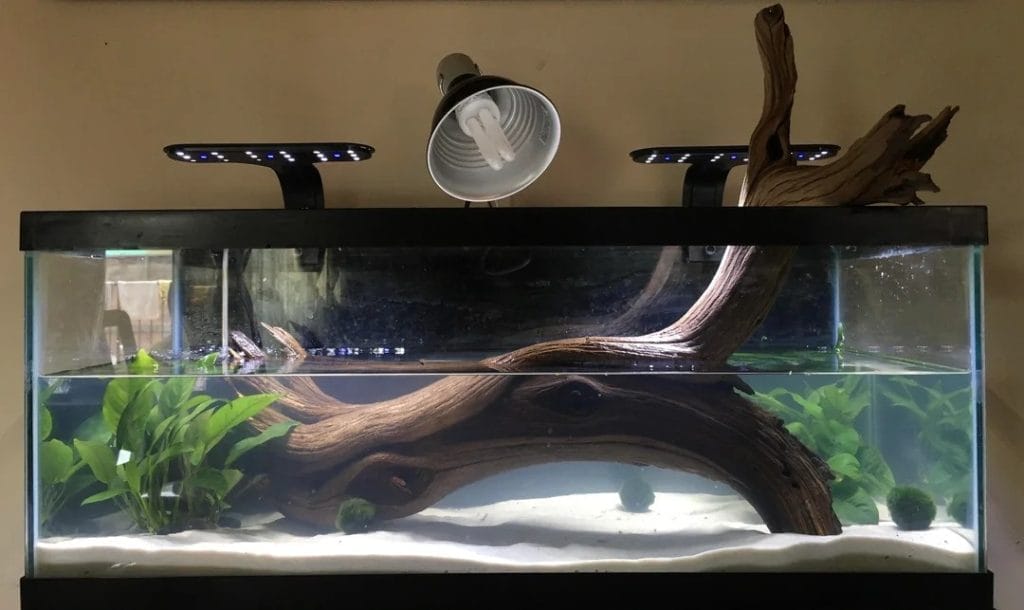9 Time-Saving Shortcuts That Actually Make Tortoise Care Easier

This post was created with help from AI tools and carefully reviewed by a human (Muntaseer Rahman). For more on how we use AI on this site, check out our Editorial Policy.
Tortoise care isn’t supposed to feel like a second job.
But if your daily routine involves constant cleaning, adjusting temps, and Googling “why won’t my tortoise eat,” something’s off. You don’t need to cut corners—you just need to stop wasting time.
Here’s how I make tortoise care simpler without messing up the basics.
1. Chop the Veggies Once a Week
If you’re chopping greens every morning, stop. You’re not making salad for royalty.
Cut up your tortoise-safe veggies and store them in containers for the week. Airtight glass or plastic containers are fine. Skip the beeswax wrap hype.
Species note:
For species like Russian tortoises or Hermann’s, who need more dry matter in their diet, you can even pre-mix chopped weeds and let them wilt slightly in the fridge. They’ll actually prefer it.

2. Line the Floor, Not Just the Tank
Forget full cleanings every few days. Line the indoor enclosure with plain newspaper or butcher paper. Daily spot cleaning becomes a 30-second job. Deep cleans? Maybe once a week, maybe less.
Species note:
This is for indoor setups. If you’re keeping a sulcata outdoors on dirt or grass, you’re already ahead—nature handles most of the mess.
This Hilarious Turtle Book Might Know Your Pet Better Than You Do
Let’s be real—most turtle care guides feel like reading a textbook written by a sleep-deprived zookeeper.
This one’s not that.
Told from the snarky point of view of a grumpy, judgmental turtle, 21 Turtle Truths You’ll Never Read in a Care Guide is packed with sarcasm, sass, and surprisingly useful insights.
And hey—you don’t have to commit to the whole thing just yet.
Grab 2 free truths from the ebook and get a taste of what your turtle really thinks about your setup, your food choices, and that weird plastic palm tree.
It’s funny, it’s honest, and if you’ve ever owned a turtle who glares at you like you’re the problem—you’ll feel seen.
3. Automate Heat and Humidity (Seriously)
If you’re still turning things on and off manually, you’re wasting time and risking mistakes.
Get a digital thermostat for your heat source. Plug it in, set your target temp, and leave it. Use a timer for UVB lighting. If your tortoise needs humidity (like red-footed or cherry head tortoises), get a humidifier with a hygrometer controller.
Set it once, check it weekly.

Perfect Wooden Tortoise House For Outdoor & Indoor!
This tortoise house isn’t cheap — but that’s because it’s not your average wooden box.
Built with durable wood, a waterproof liner, and smart design features like a sunbathing area and a hideout zone, the Aivituvin Large Wooden Habitat is made to last.
It’s perfect for tortoises or box turtles, indoors or out. And yep, it even has detachable legs.
If you’re serious about giving your tortoise a safe, comfy home without building one from scratch, this is the one.
👉 Grab the Aivituvin Tortoise House here — it’s currently $10 off.
4. Weekly Soak. Not Daily.
Unless your tortoise is a hatchling or sick, they don’t need daily soaks. Once or twice a week is enough for healthy adults.
Use a dedicated tub. No need to sterilize it every time—just rinse after use and dry. Put on a podcast while they soak so you don’t waste the time.
Species note:
Red-foots, leopard tortoises, and hatchlings dry out quicker—2–3 soaks a week is better. Adults of arid species like sulcatas need less frequent soaks but always access to water.
5. Timers for Lights = No More Guesswork
Set your UVB and heat lights on cheap plug-in timers. 10–12 hours a day. Done.
UVB bulbs need replacing every 6–12 months, even if they still light up. Mark the date with a sticky note or reminder in your phone.
Don’t use LEDs thinking they’re a UVB replacement. They’re not.

6. Buy in Bulk So You Don’t Run Out
You don’t want to be that person using paper towels for substrate because you forgot to restock.
Get your bedding, calcium, and cuttlebone in bulk. If you use coconut coir or cypress mulch, buy the big packs. They don’t expire.
7. Cheap Enrichment > Fancy Toys
You don’t need to buy overpriced “tortoise enrichment kits.” Use what you’ve got.
Cardboard boxes for tunnels. Broken terracotta pots for hides. Flat rocks for climbing. They don’t care how it looks—they’ll still shove their head inside and disappear for hours.
Species note:
This works better for active species like marginated or young sulcatas. Older or lazy torts may ignore the setup—doesn’t mean they don’t need it.

8. Keep a Care List So You Don’t Forget Stuff
Don’t rely on memory. Just make a basic checklist with daily, weekly, and monthly tasks. Stick it next to the tank or in your notes app.
Feeding? Check. Soak day? Check. Light bulb change date? Yup.
It keeps things running without you constantly second-guessing yourself.
9. Ask Real Owners, Not Just Google
There’s no shame in asking for help. Most things you’re confused about? Someone’s already solved them.
Join a tortoise Facebook group or Reddit thread. Post a photo, describe the issue, and get real feedback. You’ll avoid guesswork—and probably avoid a vet bill too.

No Overthinking. Just Smarter Habits.
You don’t need to overdo tortoise care to do it right. Set up systems, stop repeating chores, and you’ll have more time to actually enjoy your tortoise.
Want help with specific setups by species? Just ask—some shortcuts work better for sulcatas, others for red-foots.

About Author
Muntaseer Rahman started keeping pet turtles back in 2013. He also owns the largest Turtle & Tortoise Facebook community in Bangladesh. These days he is mostly active on Facebook.












